Cherry blossom viewing has been a top tourist attraction in Japan. It’s gorgeous and so attractive that it must be the most impressive experience among visitors to Japan in late March or early April. Aside from cherry blossoms, I recommend you enjoy viewing the Japanese apricot blossom, or Ume in Japanese, blooming in February in Tokyo and neighboring areas. Many temples and shrines have Ume trees with various colors: red, white, pink, etc. Still, it’s a bit small-scale, and tourists might want to see gorgeously and massively blooming Ume blossoms like cherry blossoms in the Shinjuku Gyoen Garden. If that’s the case, please consider a day trip to Odawara City, 33 minutes from Tokyo on the Shinkansen line or 80 minutes on the local rapid train on the Tokaido line.
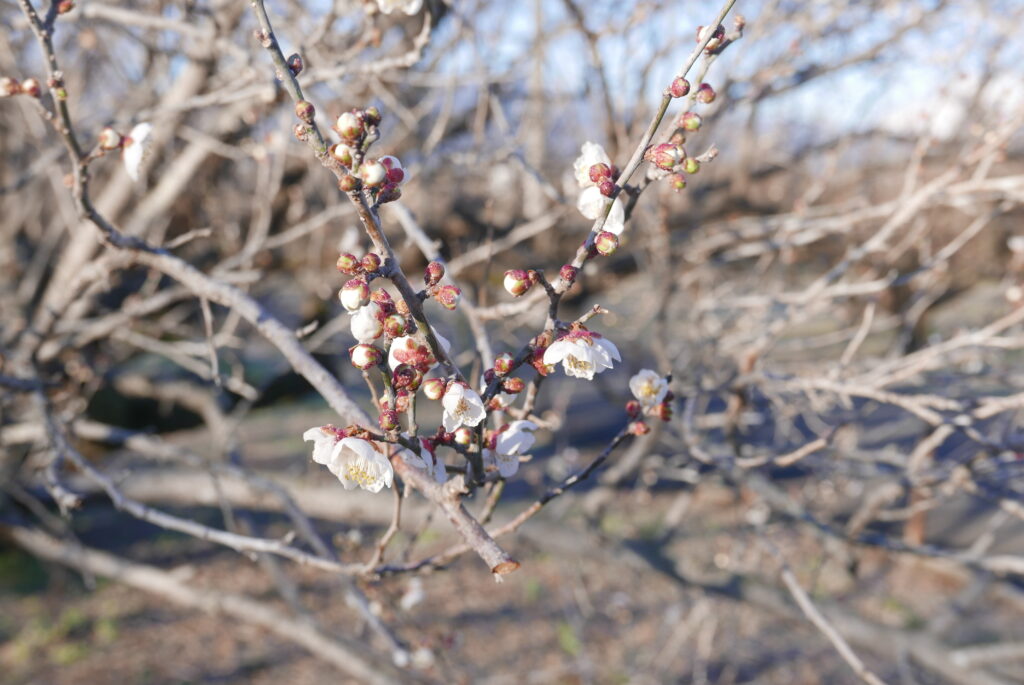
I visited the Soga Bessho area, Odawara City, Kanagawa Prefecture, around the end of January 2023. Local farmers have nurtured Ume (Japanese apricot) orchards since the feudal samurai lord Tadazane Okubo encouraged them to plant Ume trees in the 1800s. The Ume orchard area, called Soga Bessho Bairin, now has about 35,000 trees where the farmers grow edible Ume, and the orchards are open to the public for Ume blossom viewing in its blooming season in February. When I visited Soga Bessho Bairin, the trees had just started blooming, but I could still enjoy white Ume blossoms with Mt. Fuji covered with snow in the distance.
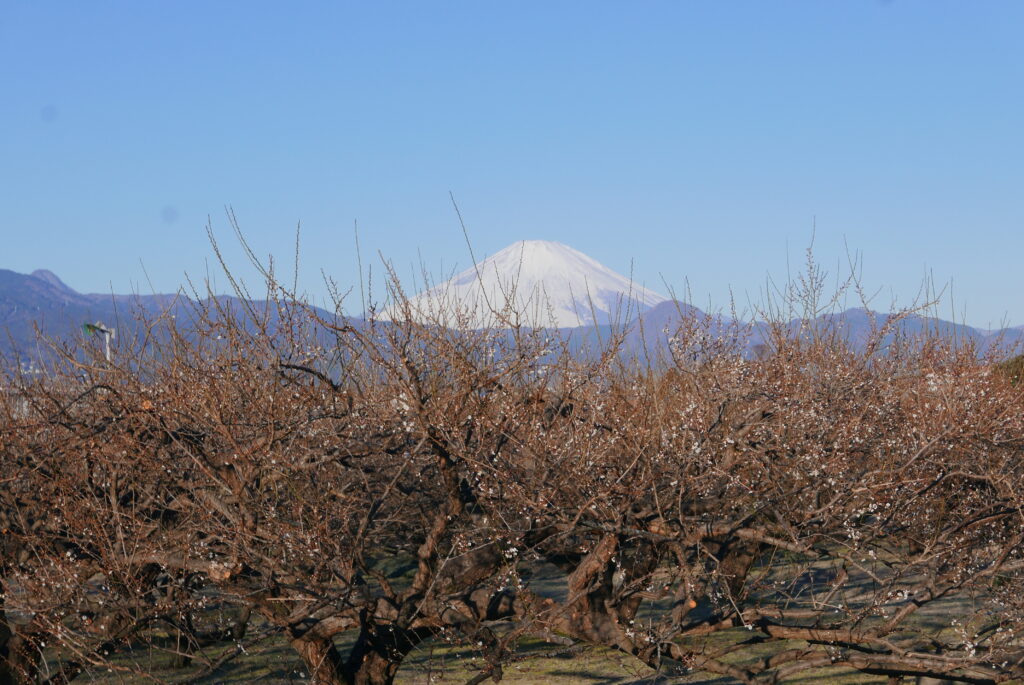
January and February are among the best seasons to see Mt. Fuji because of winter’s clear, dry, and crisp air. Imagine how impressively gorgeous it would be if Ume trees bloomed fully, and Mt. Fuji might look floating in a cloud of Ume blossoms. I will revisit the Soga Bessho Bairin next February and take photos of the image as told above. Also, I will update this post by adding photos of Ume blossoms blooming in full. Meanwhile, please take a look at the YouTube drone video of the Ume orchard below. It seems so lucrative that many international tourists in Japan might be attracted to Odawara City.
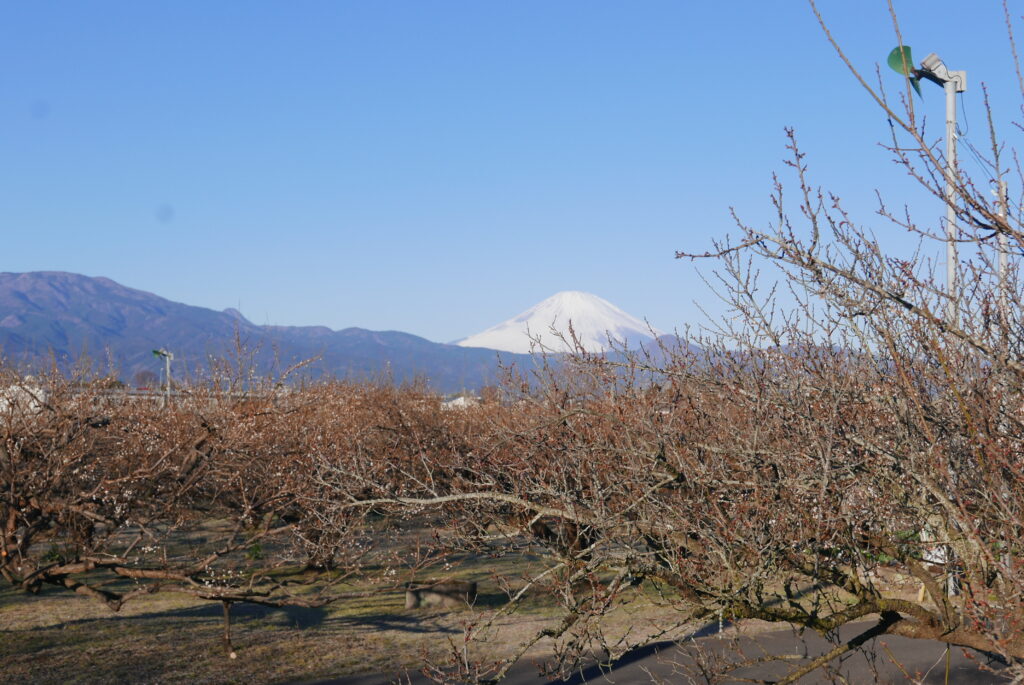
So, as you know, basically, the orchard is not a sightseeing attraction. It is the farm of edible Umes that many farmers grow. Don’t touch blossoms and branches, which harm Ume fruit and reduce agricultural production.
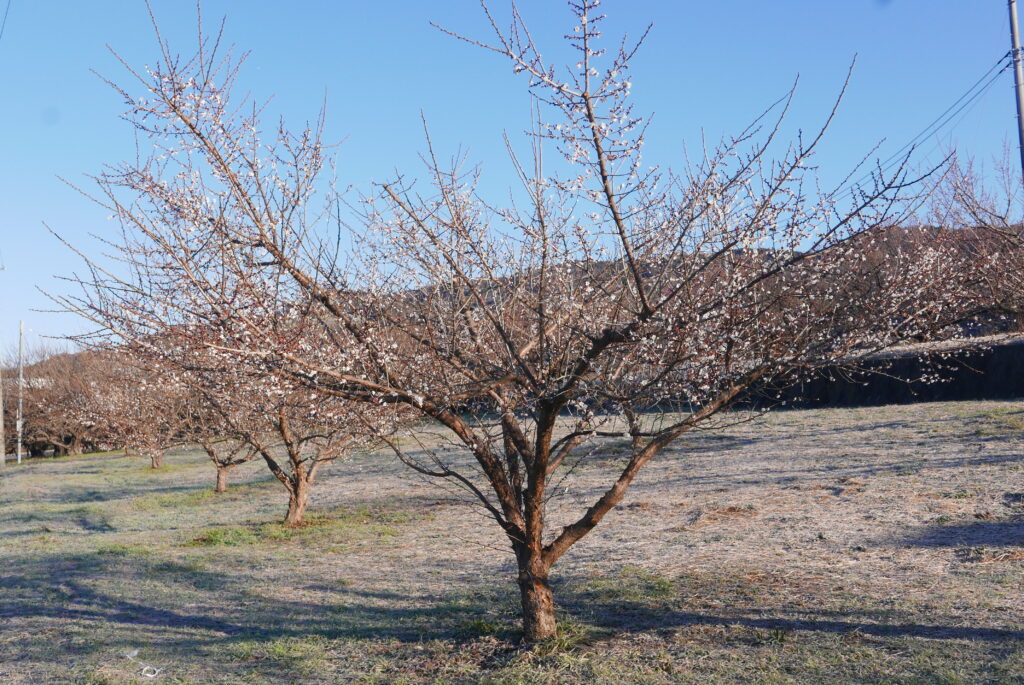
<Information of Soga Bessho Bairin>
Location of Soga Bessho Bairin: https://maps.app.goo.gl/DRkycfpV78vnmuBz6
Access: Walk from Shimosoga station on the Gotenba Line.
Note: Please be aware that a Suica card is unacceptable at Shimosoga station on the JR Tokai line if you come via Kozu on the JR East line. Shimosoga is run by the JR Tokai company, which issues TOICA, another train card or IC Card that is different from the Suica operated by the JR East company. The JR group’s regulation prohibits passengers from using an IC Card while traveling over two areas.
The next stop in Odawara was the Odawara Castle, which is famous as one of the most challenging castles to conquer in Japanese history. Unfortunately, the castle keep and other prominent structures were demolished after the Imperial army defeated the Tokugawa Shogunate. Odawara citizens and city authorities, however, launched initiatives to restore the castle. Since then, some structures have been rebuilt, and the castle keep (castle central tower) was reconstructed in 1960, and its appearance was precisely restored. However, it is a concrete structure, different from the original wood structure, and now, it accommodates the historical museum of the Odawara Castle inside. It sounds sad to lose the original structure. Still, I understand that the city authority had to consider prevention action against a future big earthquake, named the Tokai Great Earthquake, which was predicted to hit Odawara within a hundred years. Another new movement arose to restore it to the original wood structure castle in 2013. Still, the project has not completed its mission yet, but I hope the beautiful, durable, and strong castle emerges in the Ume forests soon.
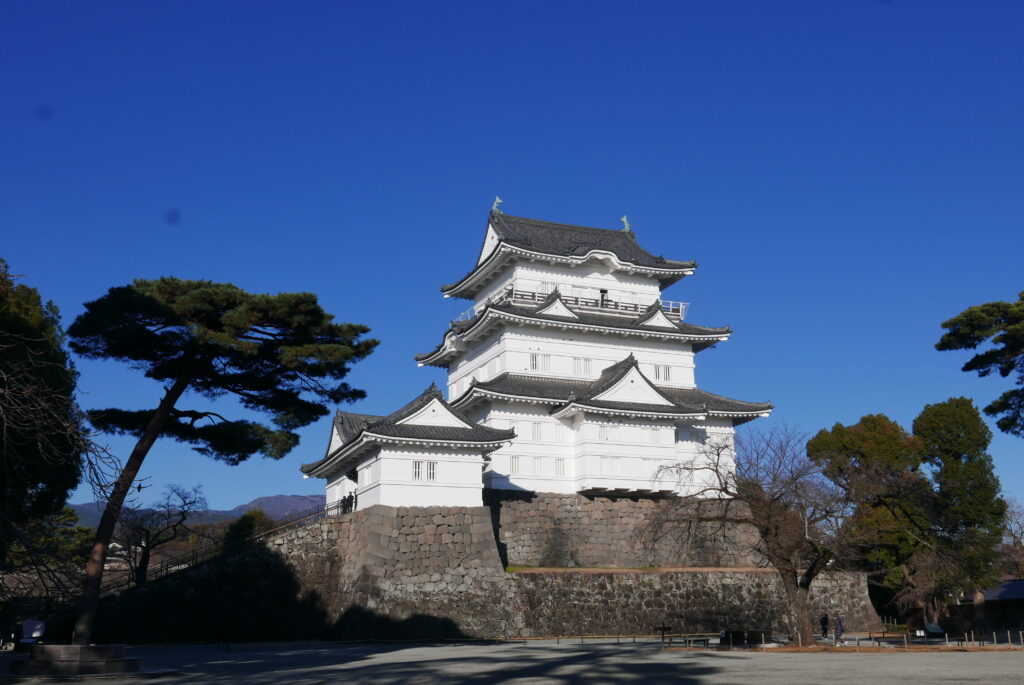
Okay, let’s start a walking tour of the Odawara Castle. It begins from Tokiwaki Gate, the main gate in front of the castle keep. As you walk up toward the castle, you soon find the Tokiwaki Gate emerges on the top of the long steps. If I were one of the samurai soldiers attacking the Odawara Castle, I would recoil tremendously because the first defensive gate, Tokiwaki Gate, stands firm and looks like it overlooks me. Standing just under the gate, you will feel gravity or heavy pressure from the giant gate doors and other structures.
Tokiwaki means evergreen tree. It is said the feudal samurai lord, Hojo, planted a giant pine tree, an evergreen tree, hoping Odawara Castle would prosper forever since pine trees have grown for decades. I felt that a massive pine tree standing just before the Tokiwaki Gate pictured his wish. The current Tokiwaki Gate was rebuilt as part of the 30th anniversary of the Odawara city’s establishment and was completed in March 1971.
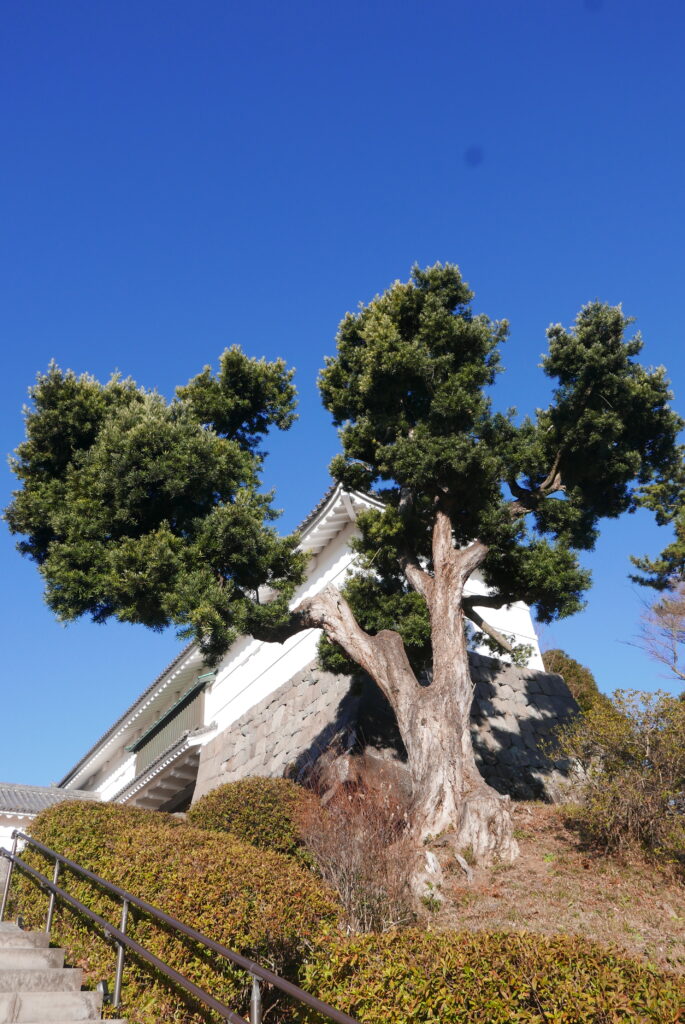
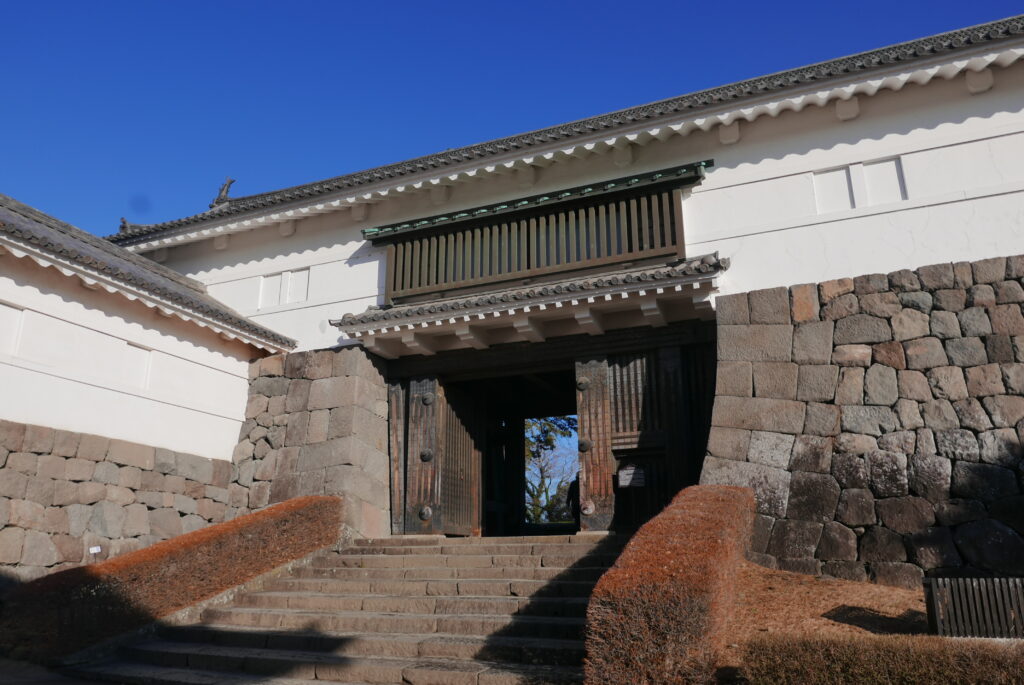
You can also enjoy the samurai costume experience here. Please visit its official website if you are interested in samurai armor. I guarantee you it’s pretty photogenic!
https://odawaracastle.com/castlepark/costume

The Tokiwaki-Mon Samurai Museum, near the gate, also reveals the history of the castle and the lives of the samurai. The exhibitions allow visitors to touch the samurai’s spiritual mind and aesthetic sense.
If you are eager to learn more about samurai armor and swords, please refer to my previous posts.
I walked around the castle clockwise up to its back.
On the left side of the castle, the long steps climb to the castle entrance. You can enter the castle and enjoy a wide view of the whole of Odawara City from the observation deck on the 4th floor. It might inspire an image as if you were a samurai lord looking down your territory.
Another attraction on the 4th floor is the exhibition room, which regularly offers special events, such as the archeological research outcomes or artworks and local craftwork fairs. From November 30, 2024, until February 24, 2025, the special event of the archeological research results since 1983 is now on display. According to the official flyer of the event, it shows how the castle was built with more than 600 excavated artifacts. I will definitely come back to Odawara next February to enjoy Ume blossoms in Soga Bessho Bairin and learn more about the Odawara castle and its history.
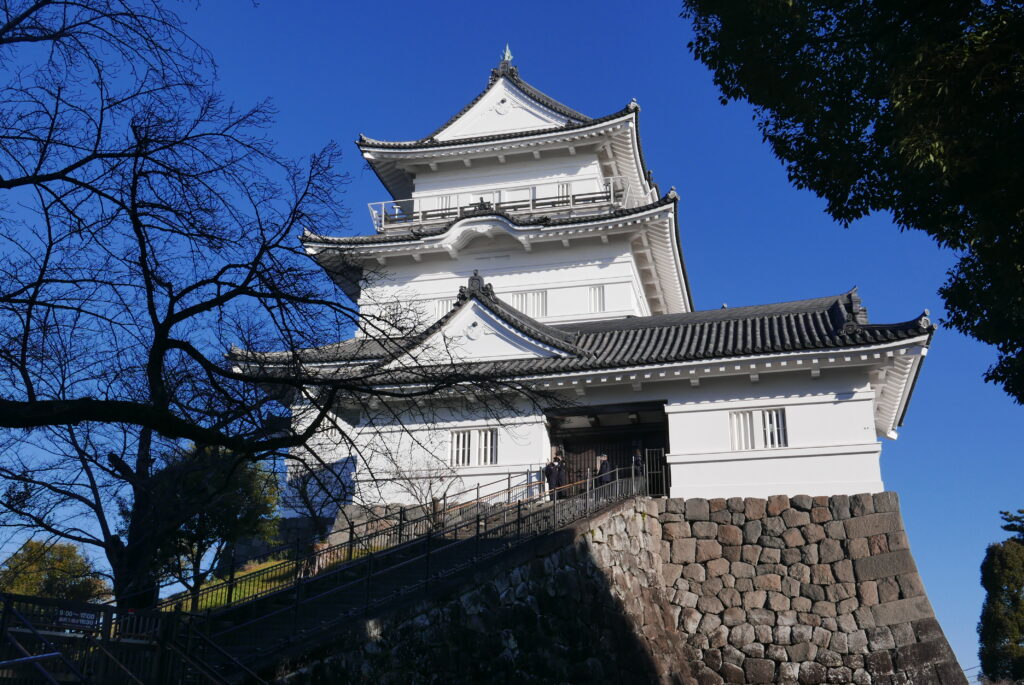
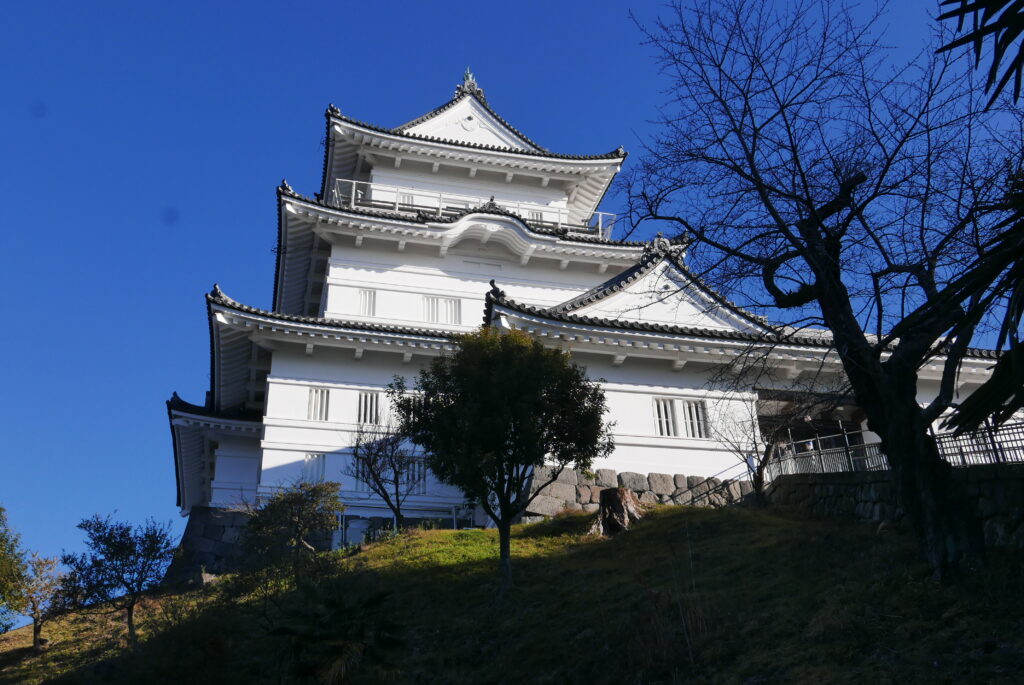
The last stop of my half-day trip to Odawara is the Hotoku Ninomiya Shrine at the foot of the castle. The shrine worships Ninomiya Kinjiro, later called Ninomiya Sontoku, a great agricultural advocate who helped local farmers and dedicated himself to developing the Odawara economy in the samurai era. He was renowned for studying very hard as a boy while working for his family. Every Japanese knows his famous episode in which he read books all the way when he carried a heavy pile of wood. It’s quite common to see his statue in almost all public elementary schools.
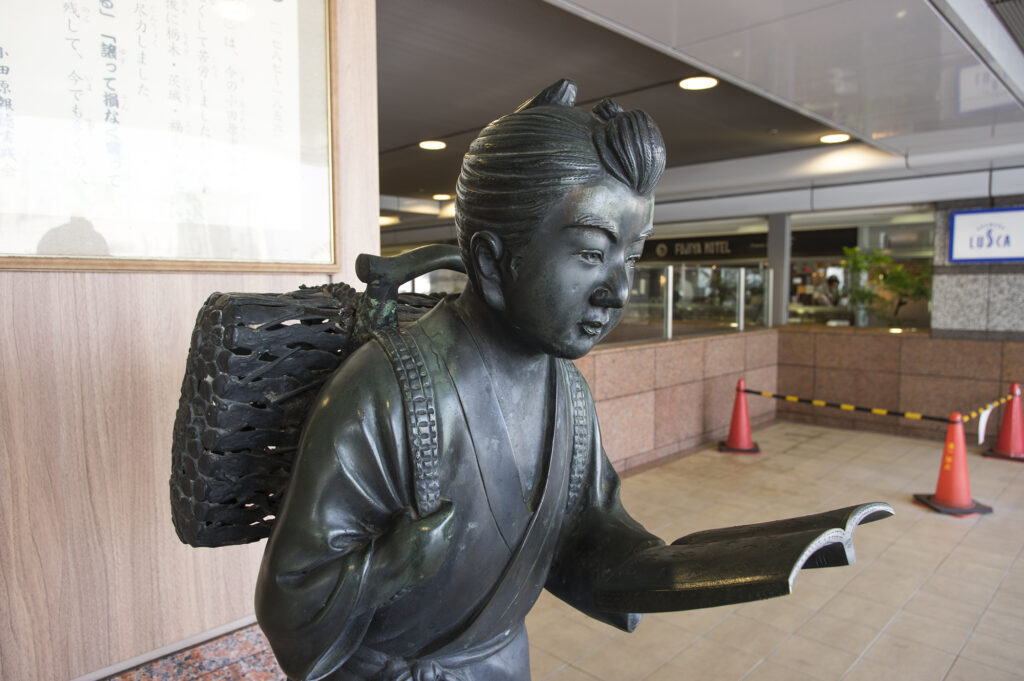
The first gate to the shrine compound is Ichi-no-torii, the first torii (gate), which makes the boundary between a sacred area inside and our ordinary life outside. There are so many styles of torii that I could not tell which category they belong to, but roughly, there are two types: Shinmyo and Myojin styles. Generally, red torii is in the Myojin style, and natural colors are considered in the Shinmyo style. According to this rule, the Ichi-no-torii seems Shinmyo style, but my headache is its two feet. It has supportive short columns, called Ryobu torii of the Myojin style, on each foot. I don’t know the exact reason, but it shows how complicated and diversified the torii styles are.
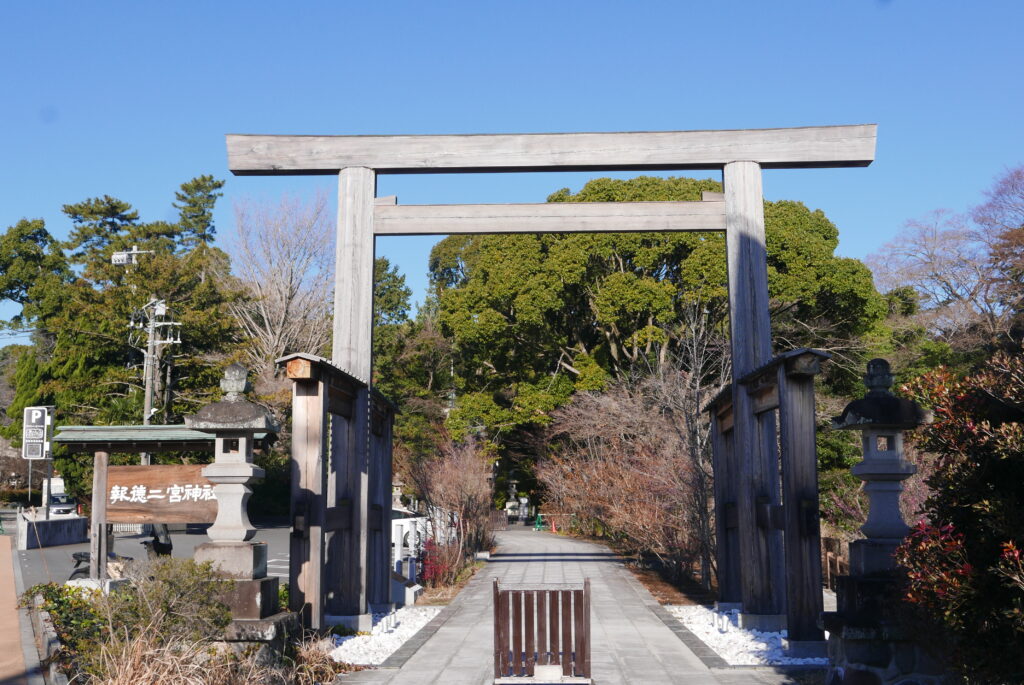
After Ichi-no-torii, the Ni-no-torii (the second torii) stands on the way to the shrine worship hall. This gate is a boundary gate to the most sacred area, the worship place. Then, here comes another headache for me. The style of the Ni-no-torii is Shinmei, not Myojin. These two torii have no consistency. Since the Japanese religious sense is permissive and open to other religions and has accepted and absorbed foreign concepts of religion, it is not so strange to have different styles in one shrine. But it’s still so interesting that I think the deity of the Hotoku Ninomiya Shrine intends to give me a chance to consider the originality of Japanese religions more.
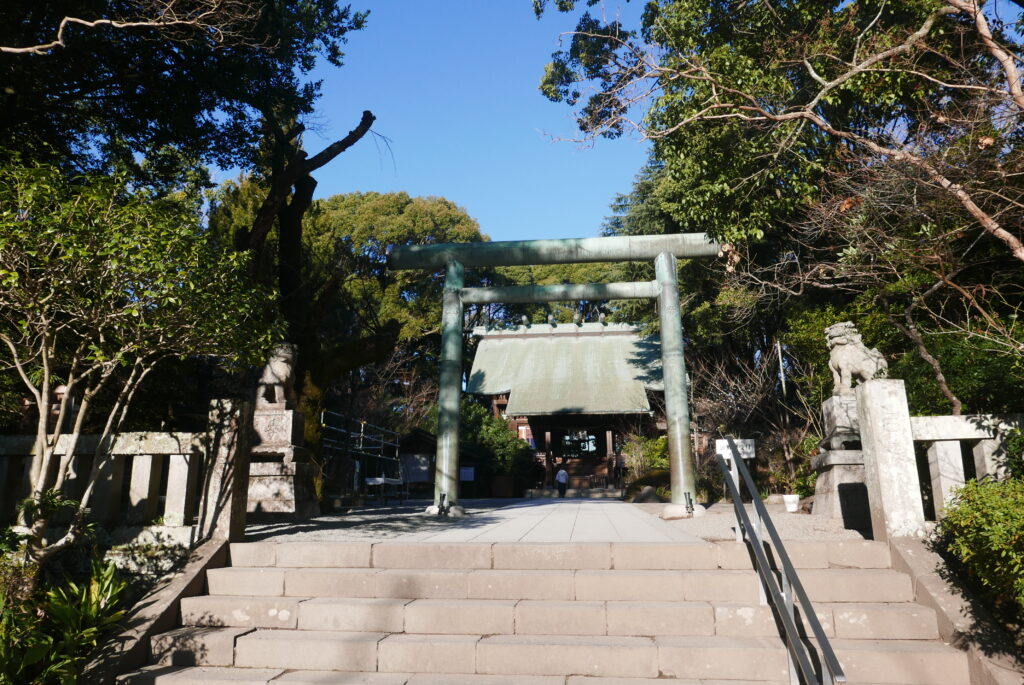
On both sides of the Ni-no-torii stand two animal statues. The pair is called Koma-Inu. Although Inu means dog in Japanese, the right statue is not a dog but a Shishi, a Japanese lion. The Shishi opens its mouth and looks like saying, “Ah.” On the other hand, the Inu closes its mouth and looks like saying, “Uhn.” The Ah and Uhn forms the Sanskrit alphabetic sound, which starts with Ah and ends with Uhn. So, the Ah-Uhn combination means the end meets the start, or eternal, representing a core concept of the Japanese religion; everything is connected, not stands alone.
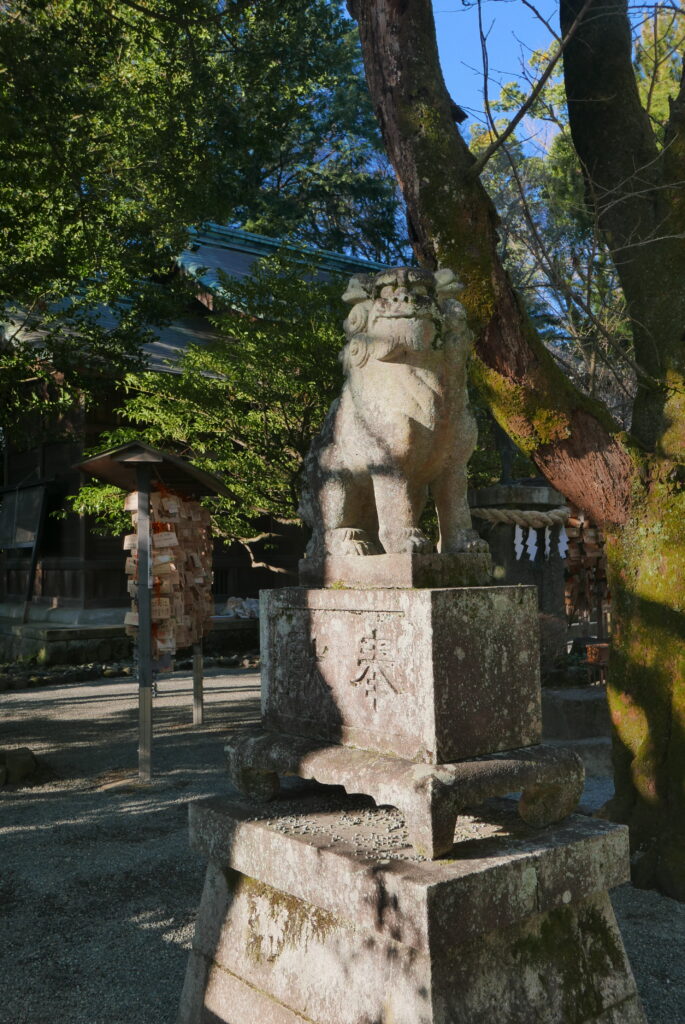
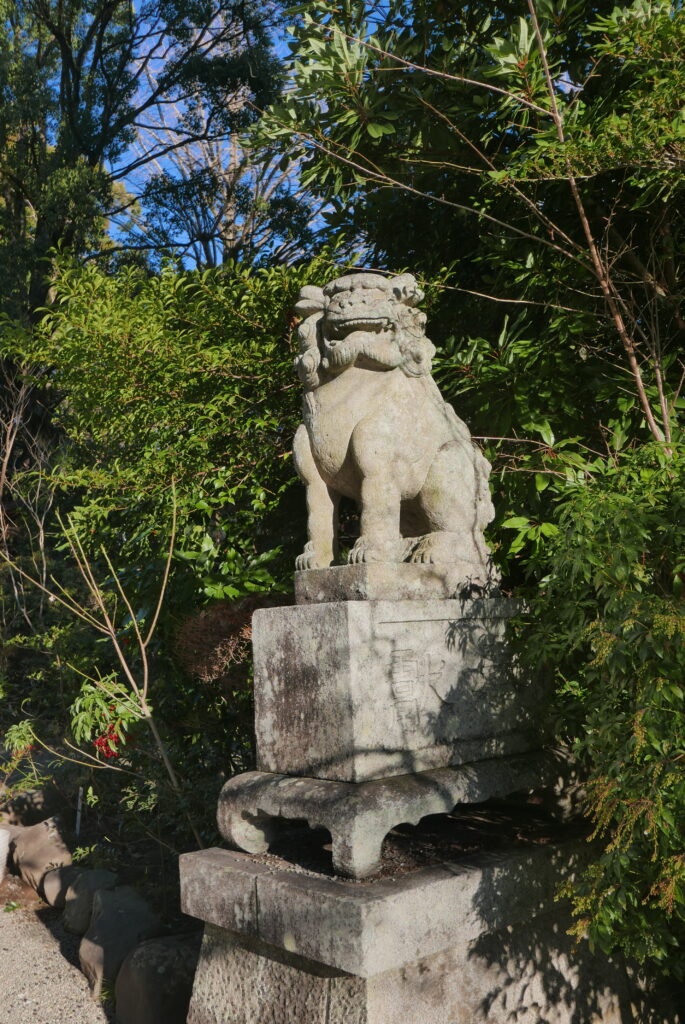
I prayed to the main worship hall for my family’s well-being and asked the deity to support my efforts to be a good guide. It was an enjoyable half-day trip to Odawara, giving me a sense of spring coming.
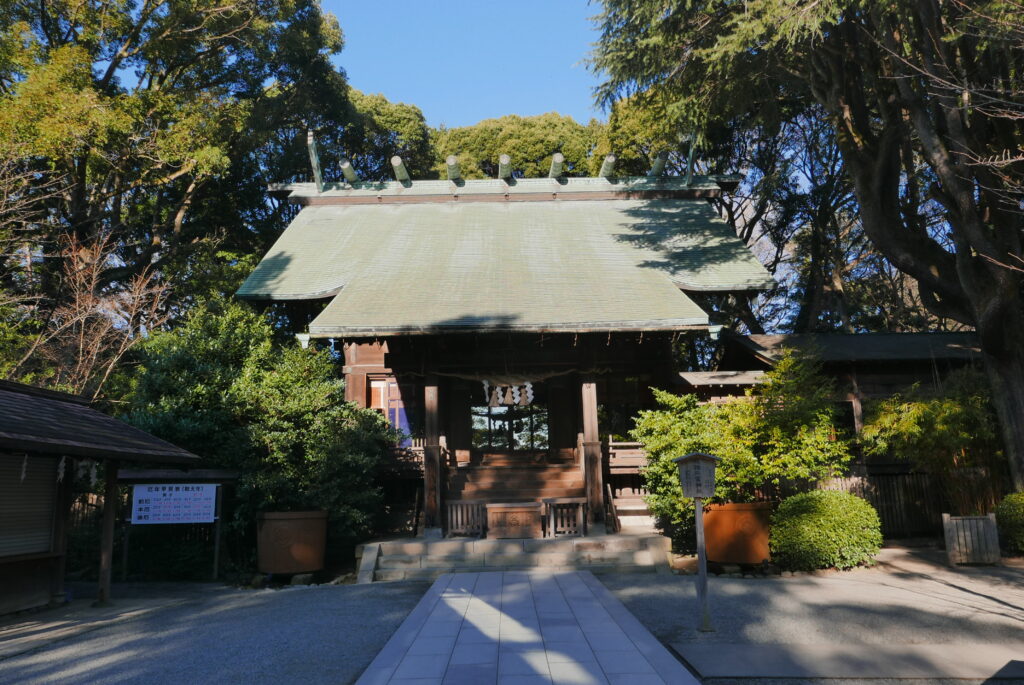
Location: https://maps.app.goo.gl/yrYAeYepsKadabs28
Access: 10-minute walk from the Odawara station on Tokaido Shinkansen Line or Tokaido Line
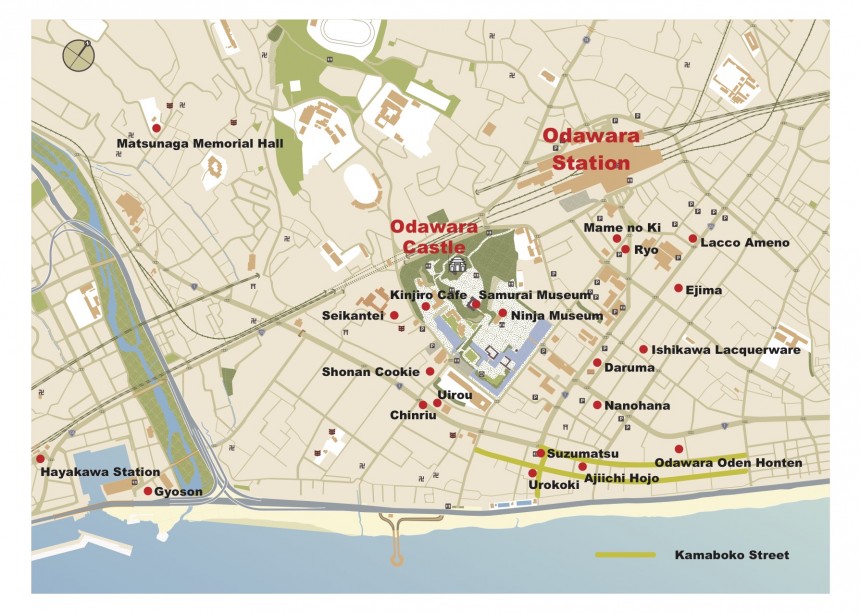
Thank you for reading my post.
If you need an English-speaking guide to explore Odawara as well as Tokyo, please click “Contact me!” below. I am willing to help you create an unforgettable private tour. Let’s enjoy amazing Odawara and Tokyo with me!
Please also leave your feedback on this post in the comment box at the bottom. I am willing to hear your opinions, requests, and suggestions.
Please click the links to get updated via my X (former Twitter) and Instagram.
X (former Twitter): https://x.com/ToruGuide
Instagram: https://www.instagram.com/toruhigaki/
Please visit the related post about blossoms in Japan.
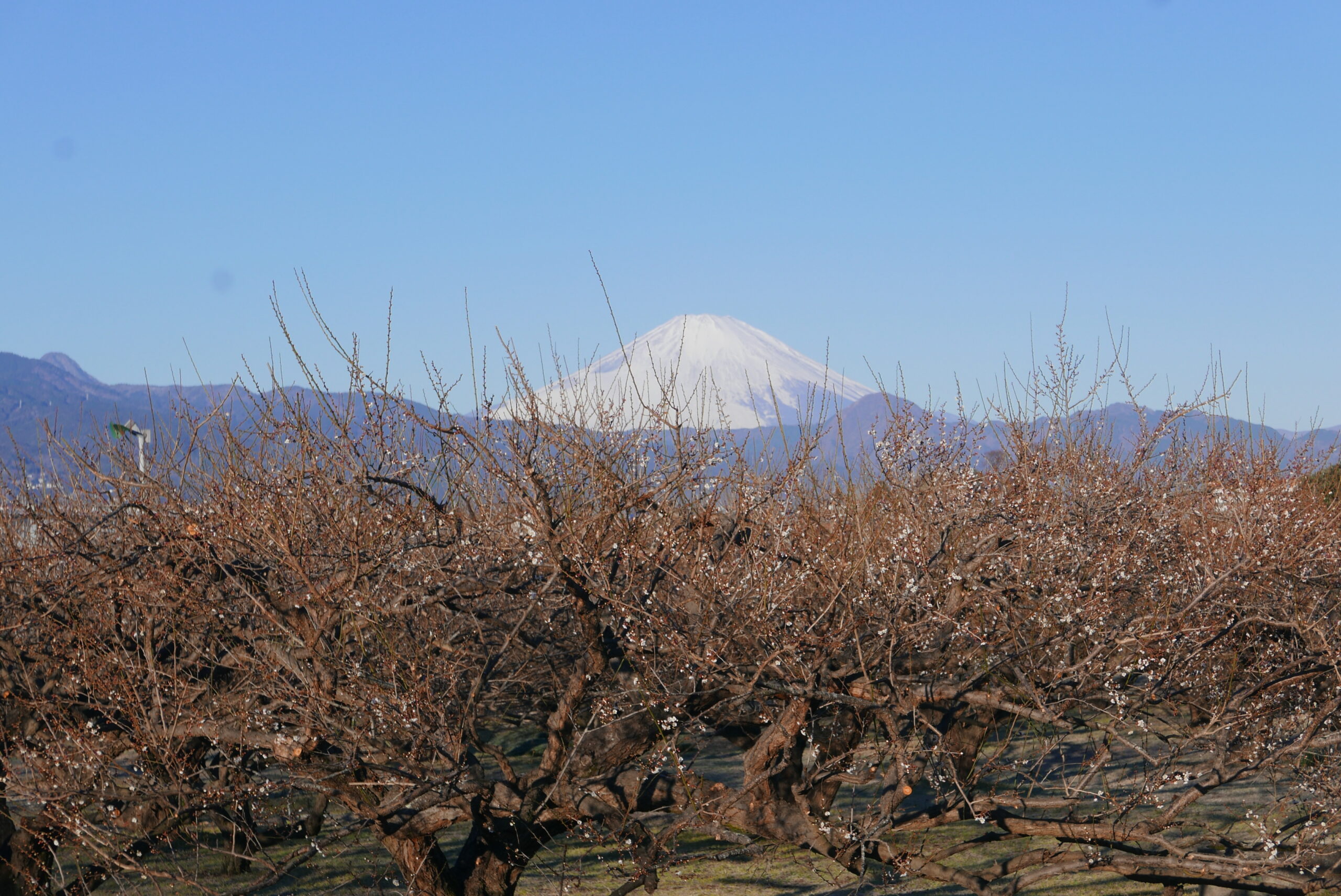












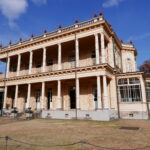
Comment